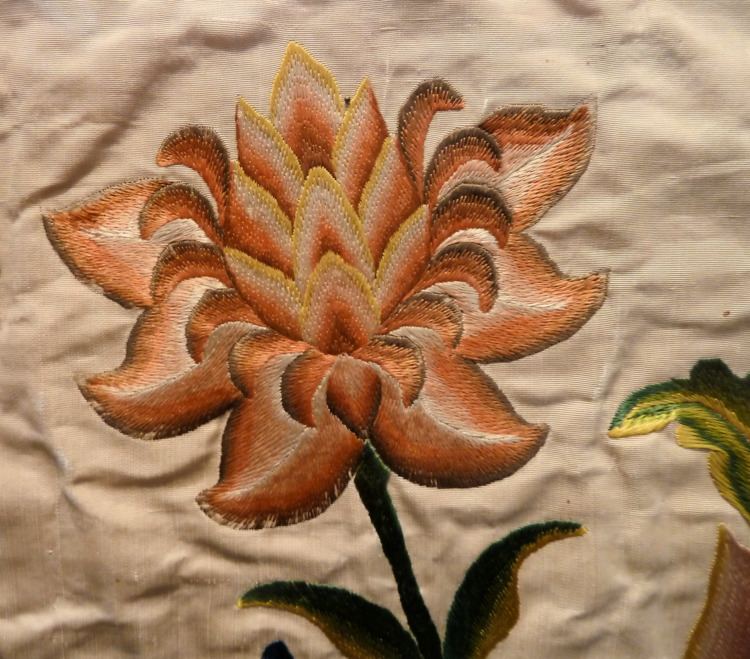 | ||
In sewing and embroidery, a satin stitch or damask stitch is a series of flat stitches that are used to completely cover a section of the background fabric. Narrow rows of satin stitch can be executed on a standard sewing machine using a zigzag stitch or a special satin stitch foot.
Contents
In order to maintain a smooth edge, shapes can be outlined with back, split or chain stitch before the entire shape including the outline is covered with satin stitch.
Machine-made satin stitch is often used to outline and attach appliques to the ground fabric.
Variants
Variants of the satin stitch include:
Thread
Satin stitch is frequently made with embroidery thread, which has less twist than standard sewing thread. This gives a more uniform effect, with the individual threads' filaments merging.
While good sewing threads produce acceptable satin stitch, low quality threads usually do not sit straight, and produce an uneven result. The colour of each thread usually does not matter.
